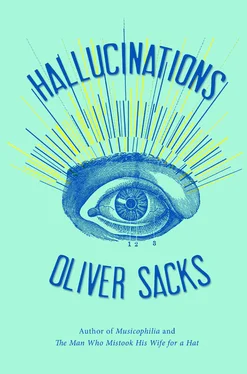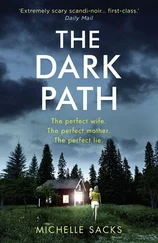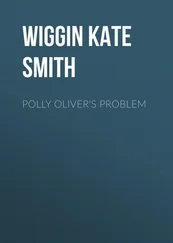In 2009, one of Zelda’s doctors suggested that she take a medication called quetiapine, which can sometimes diminish the severity of hallucinations. To our amazement and especially hers, she became entirely free from hallucinations for more than two years.
In 2011, however, she had heart surgery, and then, on top of this, she broke a kneecap in a fall. Whether it was due to the anxiety and stress of these medical problems, the unpredictable nature of CBS, or the development of tolerance to her medication, she started to have some hallucinations again. Her hallucinations, though, have taken a somewhat more tolerable form. When she is in the car, she said, “I see things, but not people. I see planted fields, flowering, and many forms of medieval buildings. Frequently I see modern buildings change into more historic looking ones. Every experience brings something different.”
One of her new hallucinations, she said, “is very difficult to describe. It’s a performance! The curtain goes up and ‘performers’ dance out on the stage — but no people. I see black Hebrew letters dressed in ballet dresses of white. They dance to beautiful music, but I don’t know where it comes from. They move the upper parts of the letters like arms and dance on the lower parts so gracefully. They come onstage from right to left.”
While the hallucinations of CBS are usually described as pleasant, friendly, diverting, even inspiring, they may occasionally take on a very different character. This happened to Rosalie when a neighbor of hers in the nursing home, Spike, died. Spike was a whimsical, laughter-loving Irishman, and he and Rosalie, both in their nineties, had been close friends for years. “He knew all the old songs,” Rosalie remarked; they would sing these together and joke and chatter by the hour. When he died suddenly, Rosalie was devastated. She lost her appetite, withdrew from social activities, and spent more time alone in her room. Her hallucinations returned, but instead of the gaily dressed figures she had seen before, she saw five or six tall men standing around her bed, silent and motionless. They were always dressed in dark brown suits and wore dark hats that shadowed their faces. She could not “see” their eyes, but she felt that they were gazing at her — enigmatically, solemnly. She felt that her bed had become a deathbed and that these ominous figures were harbingers of her own death. They seemed overwhelmingly real to her, and although she knew that if she stretched out a hand it would pass right through them, she could not bring herself to do this.
Rosalie continued to have these visions for three weeks, and then she started to emerge from her melancholy. The somber, silent men in brown disappeared, and her hallucinations started taking place chiefly in the dayroom, a place full of music and talk. They would start with a vision of patterns — quadrangles of pink and blue that seemed to cover the floor and then extend up the walls, finally spreading across the ceiling. The colors of these “tiles,” she said, put her in mind of a nursery. And, in accordance with this, she now saw little people a few inches high, like elves or fairies, with little green caps, climbing up the sides of her wheelchair. There were children, too, “picking up pieces of paper from the floor” or climbing hallucinatory stairs in one corner of the room. Rosalie found the children “adorable,” although their activities seemed pointless and, as she put it, “silly.”
The children and the little people lasted for a couple of weeks, and then they, too, vanished, in the mysterious way that such hallucinations tend to. Though Rosalie misses Spike, she has found other friends in the nursing home, and she is back to her usual routines of chatting and listening to audiobooks and Italian operas. She is rarely alone now, and — coincidentally or not — her hallucinations have, for the time being, disappeared.
If some or all sight is preserved, as with Charles Lullin and Zelda, there may be not only visual hallucinations but various disorders of visual perception: people or objects may appear too large or too small, too near or too far; there may be too little or too much color or depth; misalignment, distortion, or inversion of the image; or problems with motion perception.
If, of course, the person is completely blind, as Rosalie is, then there can only be hallucinations, but these may also show anomalies of color, depth, transparency, motion, scale, and detail. CBS hallucinations are often described as having dazzling, intense color or a fineness and richness of detail far beyond anything one sees with the eyes. There are strong tendencies to repetition and multiplication, so that one may see rows or phalanxes of people, all dressed similarly and making similar motions (some early observers referred to this as “numerosity”). And there is a strong tendency to elaboration: hallucinatory figures often seem to be wearing “exotic dress,” rich robes, and strange headgear. Bizarre incongruities often appear, so that a flower may protrude not from someone’s hat but from the middle of their face. Hallucinatory figures may be cartoonlike. Faces, in particular, may show grotesque distortions of the teeth or eyes. Some people hallucinate text or music. But by far the commonest hallucinations are the geometrical ones: squares, checkerboards, rhomboids, quadrangles, hexagons, bricks, walls, tiles, tessellations, honeycombs, mosaics. Simplest of all, and perhaps most common, are phosphenes, blobs or clouds of brightness or color, which may or may not differentiate into anything more complex. No single individual has all of these perceptual and hallucinatory phenomena, though some people may have a great range, like Zelda, while others tend to stick to a particular form of hallucination, like Marjorie, with her “musical eyes.”
In the last decade or two, Dominic ffytche and his colleagues in London have done pioneering research on the neural basis of visual hallucinations. Based on the detailed reports of dozens of subjects, they developed a taxonomy of hallucinations, including categories like figures with hats, children or small people, landscapes, vehicles, grotesque faces, text, and cartoonlike faces. (This taxonomy is described in a 2000 paper by Santhouse et al.)
With this classification in hand, ffytche went on to do detailed brain-imaging studies in which selected patients with different categories of visual hallucinations were asked to signal the beginning and end of their hallucinations while being scanned.
There was, as ffytche et al. wrote in a 1998 paper, “a striking correspondence” between the particular hallucinatory experiences of each patient and the particular portions of the ventral visual pathway in the visual cortex which were activated. Hallucinations of faces, of color, of textures, and of objects, for example, each activated particular areas known to be involved in specific visual functions. When there were colored hallucinations, there was activation of areas in the visual cortex associated with color construction; when there were facial hallucinations of a sketchlike or cartoonlike character, there was activation in the fusiform gyrus. Visions of deformed or dismembered faces or grotesque faces with exaggerated eyes or teeth were associated with heightened activity in the superior temporal sulcus, an area specialized for the representation of eyes, teeth, and other parts of the face. Text hallucinations are associated with abnormal activation in the visual word form area, a highly specialized area in the left hemisphere.
Ffytche et al. observed, moreover, a clear distinction between normal visual imagination and actual hallucination — thus, imagining a colored object, for example, did not activate the V4 area, while a colored hallucination did. Such findings confirm that, not only subjectively but physiologically, hallucinations are unlike imagination and much more like perceptions. Writing of hallucinations in 1760, Bonnet said, “The mind would not be able to tell apart vision from reality.” The work of ffytche and his colleagues shows that the brain does not distinguish them, either.
Читать дальше












